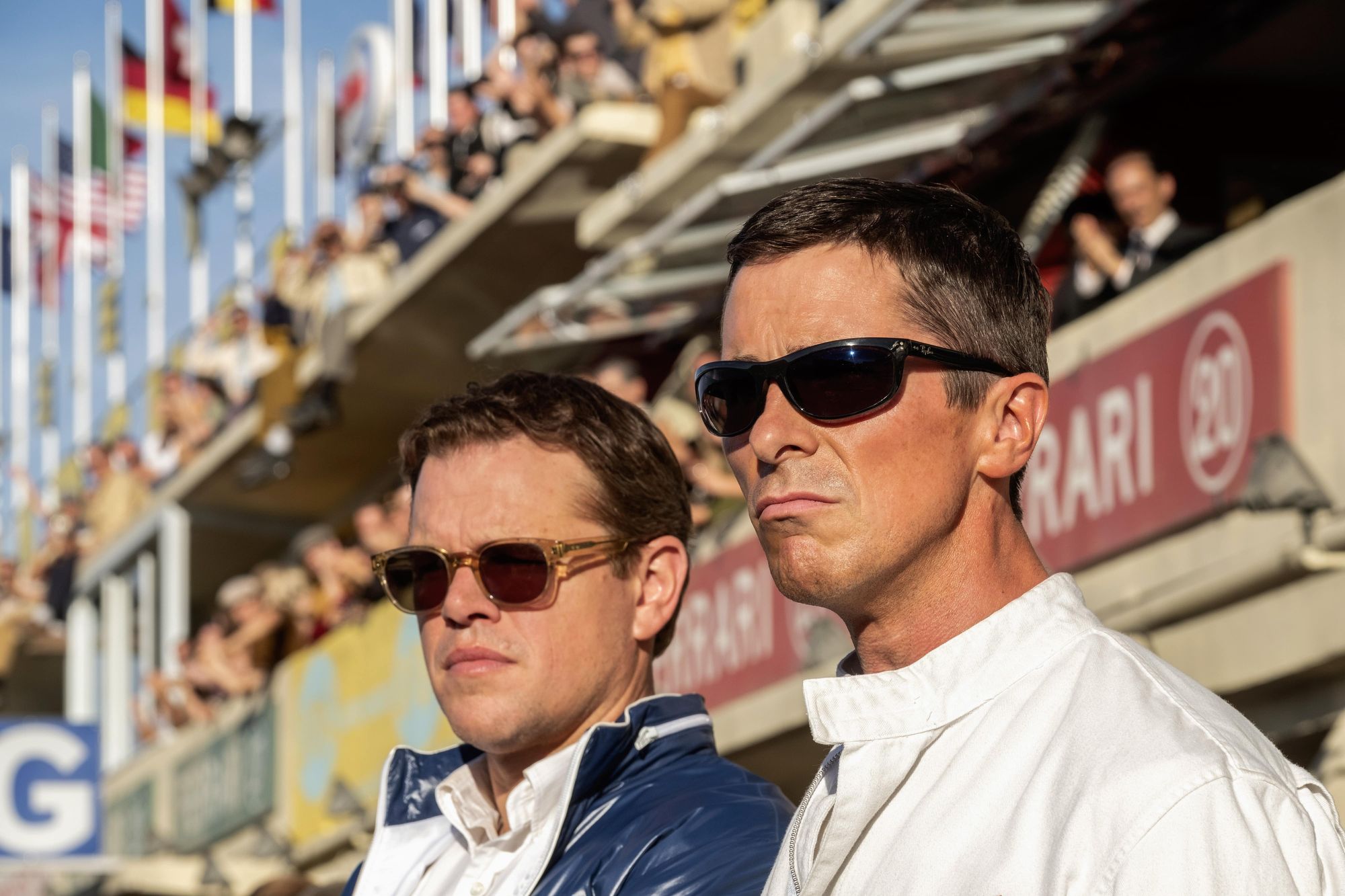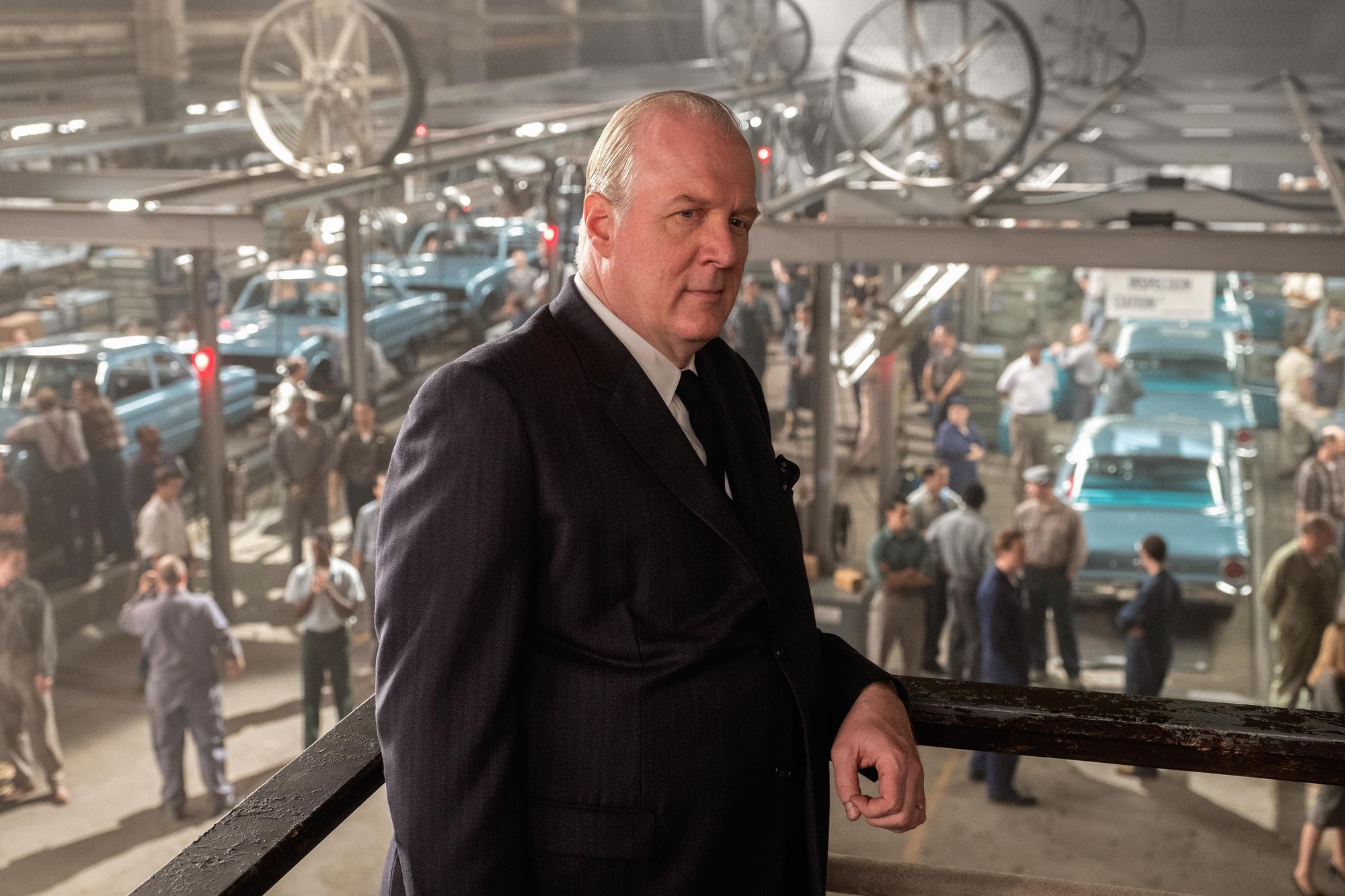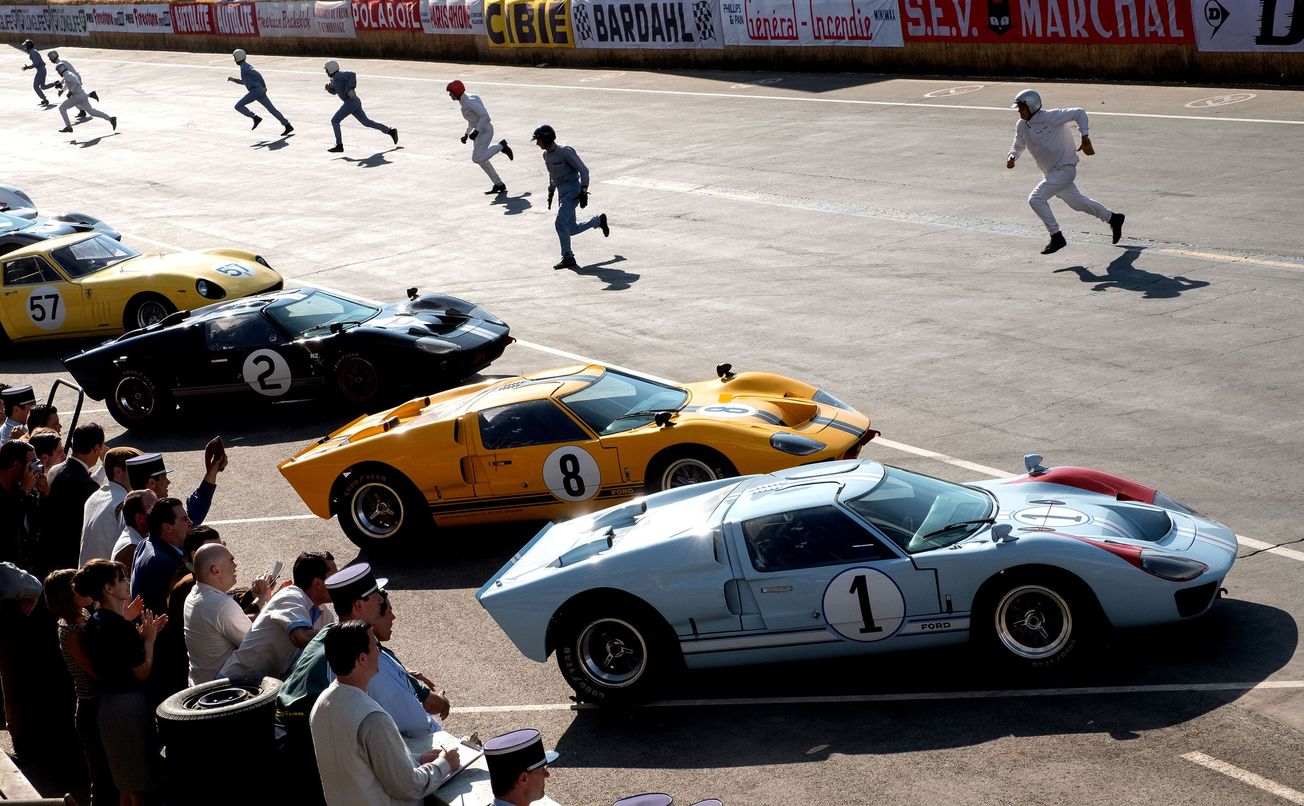By Anna Scott, Third Year, Politics
James Mangold’s high-octane battle for speed Le Mans ‘66 (2019) is more than gear-crunching and catastrophic crashes: it shows that behind every steering wheel, there is not just one man.
Whilst the US title of Ford v Ferrari suggests an America against Europe narrative, Christian Bale and Matt Damon fire on all cylinders to portray the beloved underdogs, Ken Miles and Carroll Shelby. Not only do they have to battle for racing supremacy on the track but also in the boardrooms filled with Ford executives.

This is a film that truly has it all. The brilliant cinematography, capturing the adrenaline and the danger of getting behind the wheel of a Ford GT40, led to me pressing imaginary pedals on the cinema floor, aspiring for that perfect gear change. You can nearly smell the burning rubber. Although Le Mans ’66 is of course perfect for petrolheads, it goes beyond roaring engines and tight corners.
The film displays the human condition in its rawest form, focusing on the sacrifices of these men but also the impact that their passion for cars and determination for success has on their families: with particular attention paid to Ken Miles’ wife and son, played by Caitriona Balfe and Noah Juppe, respectively.
| Charlie’s Angels is an ultimately entertaining waste of potential
The screenplay - written by Jez Butterworth, John-Henry Butterworth and Jason Kellner - goes far beyond fast cars. Mangold, with the help of a stellar cast, strongly focuses on relationships between the characters. Whilst the film sacrifices the inclusion of individuals that factually played a role in the development of the Ford GT40, it does so for the display of a journey of two men in particular.

The bromance of Miles (Bale) and Shelby (Damon) provides many laughs, usually ones taken at the expense of the Brummie/British and Texan/Southern stereotypes. Bale’s brilliant take on the Brummie accent, coupled with the use of British slang and mannerisms, adds to Miles’ character as ‘the’ maverick British race-car driver.
This is a film that truly has it all... You can nearly smell the burning rubber.
Additionally, Damon’s smooth presence and deep Southern drawl, obviously accessorised with a cowboy hat and trademark Ray-Ban sunglasses, combines deliciously with Bale to make the iconic duo of 1960s racing. Initially, I thought these recurring stereotypes were an example of lazy scriptwriting, however, with the superior acting capabilities of Bale and Damon, these stereotypes enabled the resurrection of these two icons.
Another stereotype that provides a light-hearted feel to the film was the rivalry between Henry Ford II and Enzo Ferrari. It was here that the great, nearly brutish American car tycoon went head to head with the stylish, flamboyant Italian visionary.
#FordvFerrari ~ Fabulous. Christian Bale delivers oscar worthy act & Matt Damon shines. The emotional scenes is of top level like any other @mang0ld films 💯 🏆
— Prince Prithvi (@PrincePrithvi) December 12, 2019
(5☆/5) pic.twitter.com/oQDUbHPS43
It is hard to imagine an actor other than Tracey Letts playing Henry Ford II, with his domineering personality and physique, who the many Ford executives are bustling round trying to please. These stereotypes decisively highlight the protagonists and antagonists for an emotional, humorous and adrenaline-filled joyride.
Le Mans ’66 is an incredibly inspiring film that demonstrates the mental resilience required to succeed at the highest level. Do not go into this film thinking it is a predictable tale of heart and hard work equals success. Mangold has you on the edge of your seat, physically and emotionally - you never know what is round the corner.
| The Nightingale is one of the last good films of the decade
As well as a focus on the interactions between the various protagonists and antagonists, there is an isolated focus on the relationship between man and machine. The narrative that suggests there is a symbiosis between the man and the machine at 7000 rpm - the world slows down - seems a bit silly. However, it is used by Mangold as a lens. The loneliness, the unpredictability and the danger of being behind the wheel of this entity that represents much more than Ford - it symbolises the American dream.

From the thunderous atmosphere at the start line of the Le Mans track, to the intimate and romantic scenes with Miles’ family, and the testosterone-fuelled jesting between the Ford and Ferrari teams, Marco Beltrami’s soundtrack transports you to 1966.
The unique blending of genres amplifies the swagger and intensity throughout this incredible story, immersing the viewer into the atmosphere of any particular scene, whether it is the Ford headquarters in Detroit or the tranquil Northern Italian countryside.
The loneliness, the unpredictability and the danger of being behind the wheel of this entity that represents much more than Ford
Le Mans ’66 ticks all the boxes for an enthralling, inspiring and meaningful experience - it is a truly motivational film, that showcases the heart and grit of these racing pioneers. It inspired me to the extent that I went home and googled how to become a race-car driver.
Featured: Twentieth Century Fox
Are you racing to see Le Mans '66?








